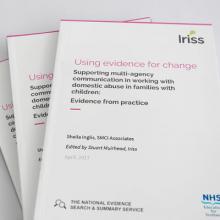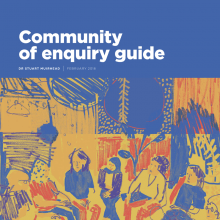This Insight examines the evidence around the effectiveness of reablement services.
Key points
- Initial research findings suggest reablement is an effective and cost-effective alternative to traditional homecare
- Evaluations reveal improvements in the health of people using services and show high levels of recipient satisfaction with the service
- Reablement has been shown to work best when staff are fully trained; receive ongoing management support; have sufficient flexibility over the duration and content of visits; and are working in multi-disciplinary teams
- Studies suggest that any transfer of provision for individuals from local authority reablement services to independent providers should be carefully handled in order to minimise disruption to service users
- A longitudinal study due for publication at the end of 2010 is expected to provide conclusive evidence about the impact and effectiveness of reablement services
Current situation
Local authorities are increasingly adopting homecare reablement as an alternative to providing domestic homecare services. For the purposes of this evidence review, reablement services are defined as 'services for people with poor physical or mental health to help them accommodate their illness by learning or re-learning the skills necessary for daily living' (CSED 2007 p8). The focus is on improving the capacity for self-care, working closely with an individual over a limited time period to build up skills and confidence. Some homecare reablement services are selective hospital discharge services, taking only referrals from people being discharged from hospital or intermediate care who are thought likely to benefit. Increasingly however, reablement services are being considered for everyone eligible for social care and referred for homecare - an 'intake' service. Generally only people with severe dementia or terminal illness are excluded from these generic services.
In Scotland, the service is usually provided free of charge to recipients for the first six weeks. Following the initial six weeks of reablement, individuals are normally re-assessed and their future needs identified and addressed, either through the withdrawal of services, further homecare or the provision of other services.
A typical reablement service is outcome- focused, lasts between two and six weeks and has a defined maximum duration. The objectives of the reablement process can be defined as:
- Maximising users long-term independence, confidence and quality of life
- Appropriately minimising ongoing support and thereby reducing the whole-life cost of care
A screening meeting is held at which a team of multi-disciplinary professionals assesses the individual's suitability for reablement services. The type and the duration of the support offered tends to vary according to the assessed needs of the individual. Reablement services are generally provided by teams including reablement workers and occupational therapists (OTs).
In those teams that do not include OTs, arrangements will be made for fast-track referrals to OTs.
In all cases, reablement workers will usually be trained and able to supply small/ non-specialised pieces of equipment (for example perching stools or toilet seats). Teams jointly funded with health may include a physiotherapist.
Traditionally, homecare staff are largely unqualified but the demands of reablement mean that in many areas of Scotland an SVQ Level 2 in social care is a pre-requisite for staff delivering reablement services. A major feature in the development of reablement services is the need to train homecare staff to change the way in which they have traditionally delivered support - assisting the individual to undertake the task for themselves rather than the worker doing it for them. Additional training is essential for this culture shift.
The evidence so far strongly suggests that a period of home care reablement can reduce the subsequent use of home care services.
-Glendinning and Newbronner, 2008
Policy context
The increase in the proportion of older people in the UK population is fuelling the debate on how homecare can best be managed. The latest annual return (Scottsh Government, 2009) records 68,334 homecare clients, receiving on average 9.5 hours of support per week. Net costs increased from £460 million in 2007-08 to £552 million in 2008-09. The number of people of pensionable age in Scotland is projected to rise from 1.02 million in 2008 to 1.07 million in 2018 (an increase of 6 per cent). It is then projected to rise more rapidly, reaching 1.34 million in 2033. A major influence on policy has been the need to address older people's preference to stay in their own home and the steep increase in costs associated with delivering homecare to a growing number.
Reablement is viewed as a means of assisting individuals to lead full and independent lives whilst reducing the overall cost of provision. This has coincided with an outcomes approach to social care. This seeks to evaluate and monitor how effectively care services assist people to live independently within a community setting, an approach made explicit in Better Outcomes for Older People (Scottish Government, 2005) and the Shifting the Balance of Care initiative (Scottish Government et al, 2009). These reports, along with the introduction of a National Performance Framework and Single Outcome Agreements between each
Community Planning Partnership and the Scottish Government, offer a framework for addressing the impact of services on those in receipt of them. The purpose, content and delivery of reablement services are at the forefront of the current policy environment.
The most recent evaluations of the effectiveness of reablement include the evaluation of the reablement scheme established in Edinburgh (McLeod and Mair, 2009) and the interim reports from a collaborative research project between the Social Policy Research Unit (SPRU) and the Personal Social Services Research Unit (PSSRU) which is investigating the longer term impact of homecare reablement services (Jones et al, 2009; Rabiee et al, 2009). The latter is the largest study of its type undertaken in England. It considers reablement interventions over a two-year period and has a control group. The final report, which considers the results from the control group, will be available late 2010. The two interim reports focus on reablement service users and are detailed below.
- Prospective Longitudinal Study, Interim Report 1: The Short-term Outcomes and Costs of Reablement Services, October 2009
This interim report describes a significant overall short-term improvement in perceived health, quality of life and social care outcomes between the pre- and post-intervention time points.
- Prospective Longitudinal Study, Interim Report 2: The Organisation and Content of Homecare Reablement Services, October 2009
This interim report looks at different aspects of existing services to identify elements that maximise or compromise their effectiveness, including internal organisation and external factors.
Additional data can be found in three earlier studies:
- An external evaluation of a reablement scheme in Leicestershire, with a control group (Kent et al, 2000)
- An in-house evaluation of a reablement scheme in Western Australia, with a control group (Lewin et al, 2006)
- A retrospective longitudinal study of the longer-term impact of four UK reablement schemes (Newbronner et al, 2007)
All of the studies mentioned indicate the favourable effects of reablement approaches on service users and underscore potential cost savings. The limitations of these studies include small sample sizes and short-term assessments. In addition, evaluations of pilot reablement schemes may be more likely to demonstrate positive results because they involve highly motivated, self-selected staff and additional resources. This is an acknowledged influence on the positive findings of the Edinburgh study (McLeod and Mair, 2009). With the exception of the impending DH prospective longitudinal study, studies to date have looked only at the short-term effects of reablement programmes (City of Edinburgh, three months after reablement). It is therefore necessary to concur with Ryburn and colleagues (2009) that the longer-term results of reablement interventions have yet to be fully evidenced.
Positive outcomes are also more likely to be demonstrated from selective reablement services and/or those that focus on people discharged from hospital. While reablement staff emphasise that even small gains in confidence and quality of life are important among people receiving reablement through a non-selective 'intake' service, they are more difficult to evidence through research. Inclusive/intake services are therefore likely to find it more difficult to demonstrate positive outcomes to the same extent.
With the proviso of these limitations, the results of research on reablement are very encouraging both for people who use services and for service providers. In particular, the Edinburgh study cites that 92% of participants claimed increased confidence and were satisfied with the reablement service that they received. The evaluation also indicated that the number of care hours needed by reablement recipients decreased by 41%, whilst it increased for non-reablement clients. The SPRU/PSSRU study shows that the levels of service user dependency pre-and post-reablement intervention across eleven areas of activity improved significantly on four dimensions: ability to handle personal toileting, bathe and shower (21% increase) and being able to dress and undress (19% increase). Very positively, 30% of reablement clients included in the study claimed their health had improved.
The Edinburgh study notes that the costs of the reablement service were higher than the more traditional homecare service provided to the control sample. The hours freed up due to reablement services were considered, however, to contribute to time-releasing efficiency, increasing the local authority's ability to care for more people using the same level of resources. The short-term nature of this study, over the twelve weeks following reablement, provides little information on whether these gains were maintained in the longer term. It was also mentioned in the research report that the reablement methodology includes a service user re-appraisal after six weeks, to determine new service levels, and that this re-appraisal was never part of usual homecare services. Whether a six-week re-appraisal with traditional homecare would yield similar benefits is a question raised in the research.
The CSED research conducted over a period of a year provides a more extended view of reablement (Newbronner et al, 2007; CSED, 2008). This research shows that in three of the four schemes examined, 53% and 68% of clients left homecare needing no further intervention and that 36% and 48% needed no homecare two years following the reablement period. The economic indications of current research into reablement type interventions have been very positive and two favourable outcomes have been attributed to the approach, either a cessation of homecare services, or a reduction in the number of hours of service required. Both outcomes result in increased savings for the homecare budget.
Overall the evidence directly supporting the case for reablement over usual homecare is extensive and favourable, but still inconclusive. The ongoing study by SPRU and PSSRU due for completion end 2010 is expected to close the research gap and to show more conclusively the effects of reablement interventions.
Implications for practice: conclusions and recommendations
Reablement is a homecare practice that appears to be more effective than other approaches in helping people regain or develop self-sufficiency skills. Its use is increasing within support services in Scotland, although figures indicate that its uptake still varies considerably throughout local authority areas.
Reablement is considered to work best when staff are fully trained in its deployment, are committed to it and have the knowledge and skills necessary for its implementation (Rabiee and Glendinning, 2010). Other factors credited with contributing to its success include the involvement of occupational therapists and other specialists working together in multi-disciplinary teams. Senior practitioner support and supervision; detailed communication between members of the reablement team visiting a particular user; and flexibility in the organisation, timing and content of visits are also considered to contribute to success.
User motivation and the positive involvement of carers are also considered critical to achieving successful reablement outcomes. A degree of reticence to participate in reablement schemes was observed amongst those service users who had previously been in receipt of traditional services. It is therefore important that service users and practitioners engage on the aims of the service from the outset.
One further area of considerable consequence for those delivering reablement services is the 'hand-over' period. This is the point at which an individual requiring ongoing homecare may be transferred from the reablement support provided by local authorities to an independent provider (Rabiee and Glendinning, 2010). The Edinburgh study highlights that this is a critical period where the benefits of reablement might be lost if the hand-over is compromised in any way. To this end, Edinburgh has developed a hand-over protocol which should be used to minimise any potential detrimental effects or glitches at this stage of the reablement process. In addition, delays in transferring service users for long-term homecare support because of capacity problems in the latter sector create problems in the reablement service:
- Reablement workers are required to continue supporting existing clients and are unable to take on new reablement clients
- Reablement workers may find themselves providing 'ordinary' homecare and thus 'unlearn' the distinctive reablement approach.
References
- Care Services Efficiency Delivery Programme (2007) Home care Reablement Workstream Discussion Document, London: Care Services Improvement Partnership
- Care Services Efficiency Delivery Programme (2008) Benefits of homecare reablement for people at different levels of need, London: Care Services Improvement Partnership
- Glendinning and Newbronner (2008) The effectiveness of home care reablement - developing the evidence base, Journal of Integrated Care, 16, 4, 32-39
- Jones K, Baxter K, Curtis L et al (2009) The Short-term Outcomes and Costs of Home Care Re-ablement Services: Interim report, Investigating the Longer Term Impact of Home Care Re-ablement Services, York: Social Policy Research Unit
- Kent J, Payne C, Stewart M et al (2000) External Evaluation of the Home Care Reablement Pilot Project, Leicester: Leicestershire County Council
- Lewin G, Vandermeulen S and Coster C (2006) Programs to promote independence at home: How effective are they? Generations Review, 16, 3, 24-26
- McLeod B and Mair M (2009) Evaluation of City of Edinburgh Council Home Care Re-ablement Service, Edinburgh: Scottish Government Social Research
- Newbronner L, Baxter M, Chamberlain R et al (2007) Research into the Longer Term Effects/ Impacts of Reablement Services, Homecare Reablement Workstream, London: Care Services Efficiency Delivery Programme
- Rabiee P, Glendinning C, Arksey H et al (2009) The Organisation and Content of Home Care Re-ablement services: Interim report, Investigating the Longer Term Impact of Home Care Re-ablement Services, York: Social Policy Research Unit
- Rabiee P and Glendinning C (2010) The organisation and content of home care reablement services, Research Works 2010-01, York: Social Policy Research Unit
- Ryburn B, Wells Y and Foreman P (2009) Enabling independence: restorative approaches to home care provision for frail older adults, Health and Social Care in the Community,17, 225-234
- Scottish Government (2005) Better Outcomes for Older People: Framework for Joint Services, Edinburgh: Scottish Government
- Scottish Government (2009) Home care services, Scotland, 2009, Edinburgh: Scottish Government
- Scottish Government et al (2009) Improving outcomes by shifting the balance of care, improvement framework, Edinburgh: Scottish Government




